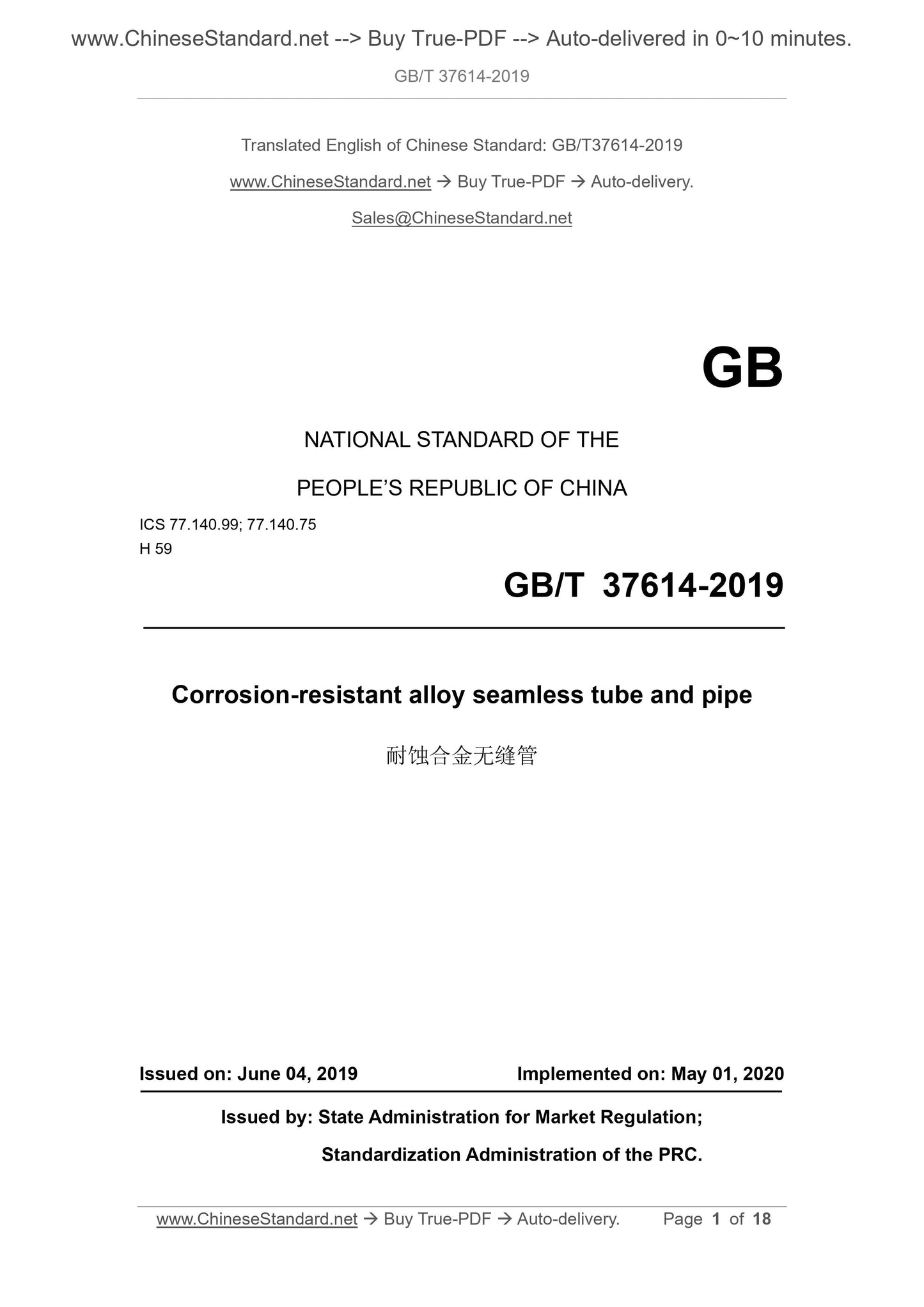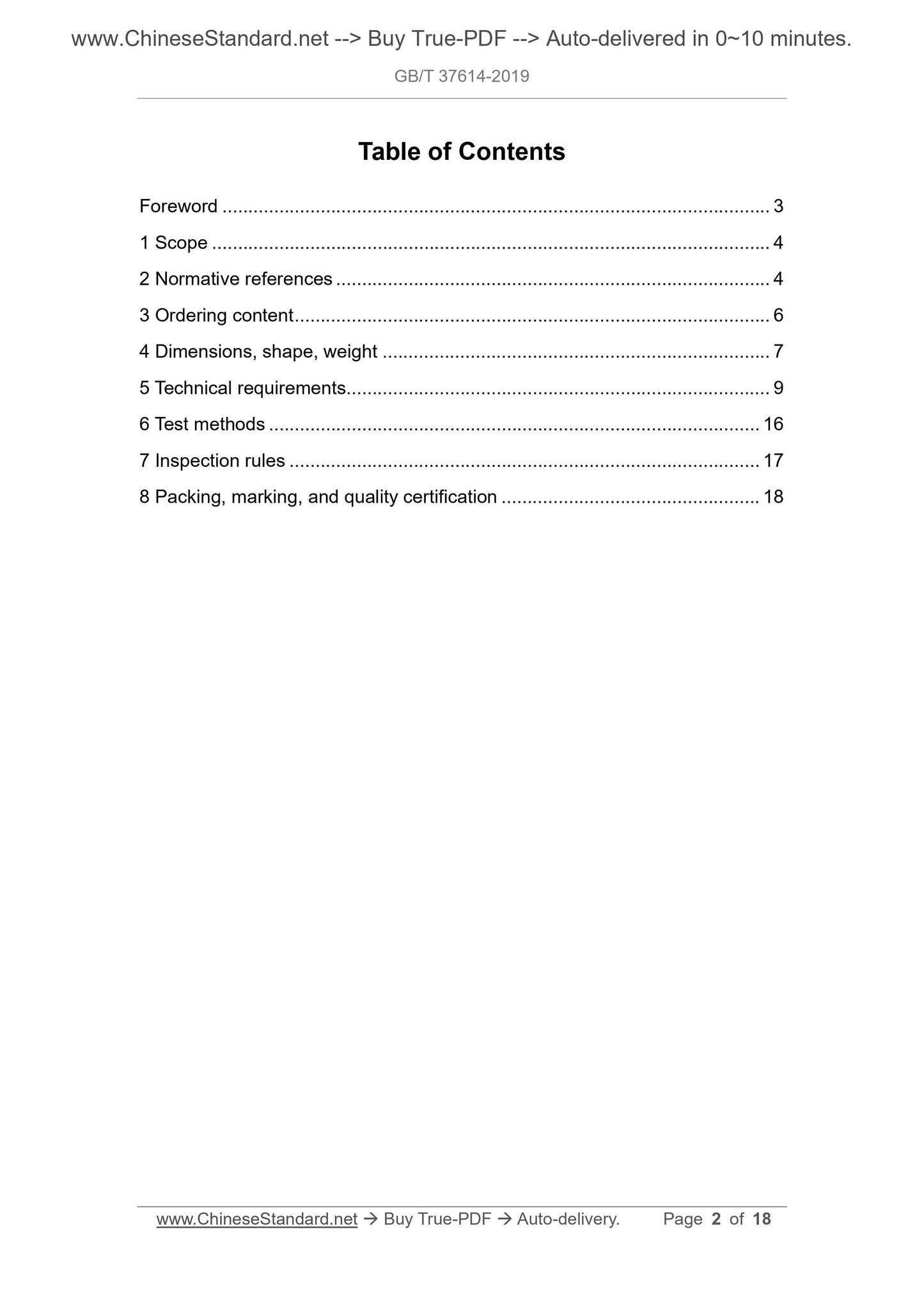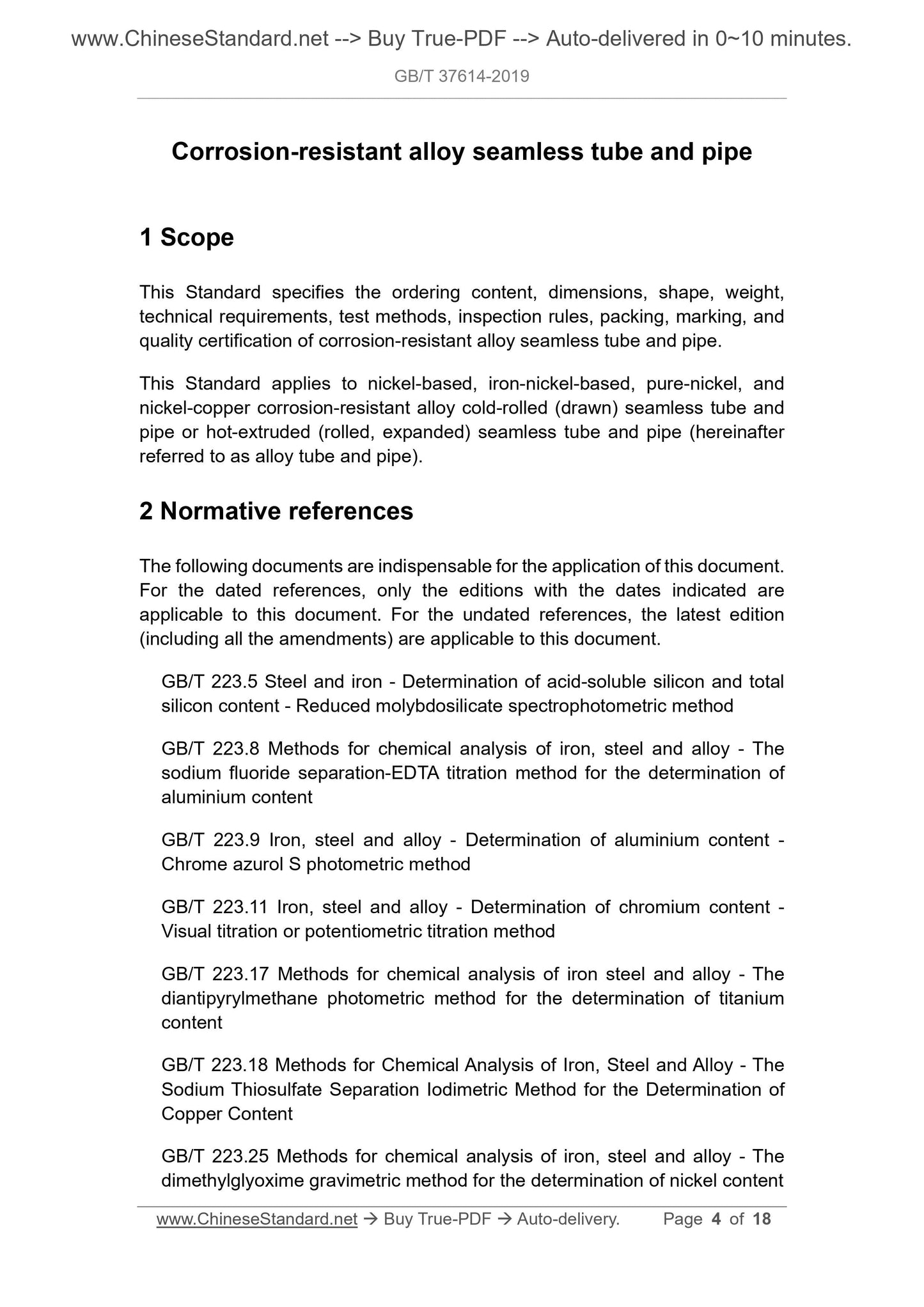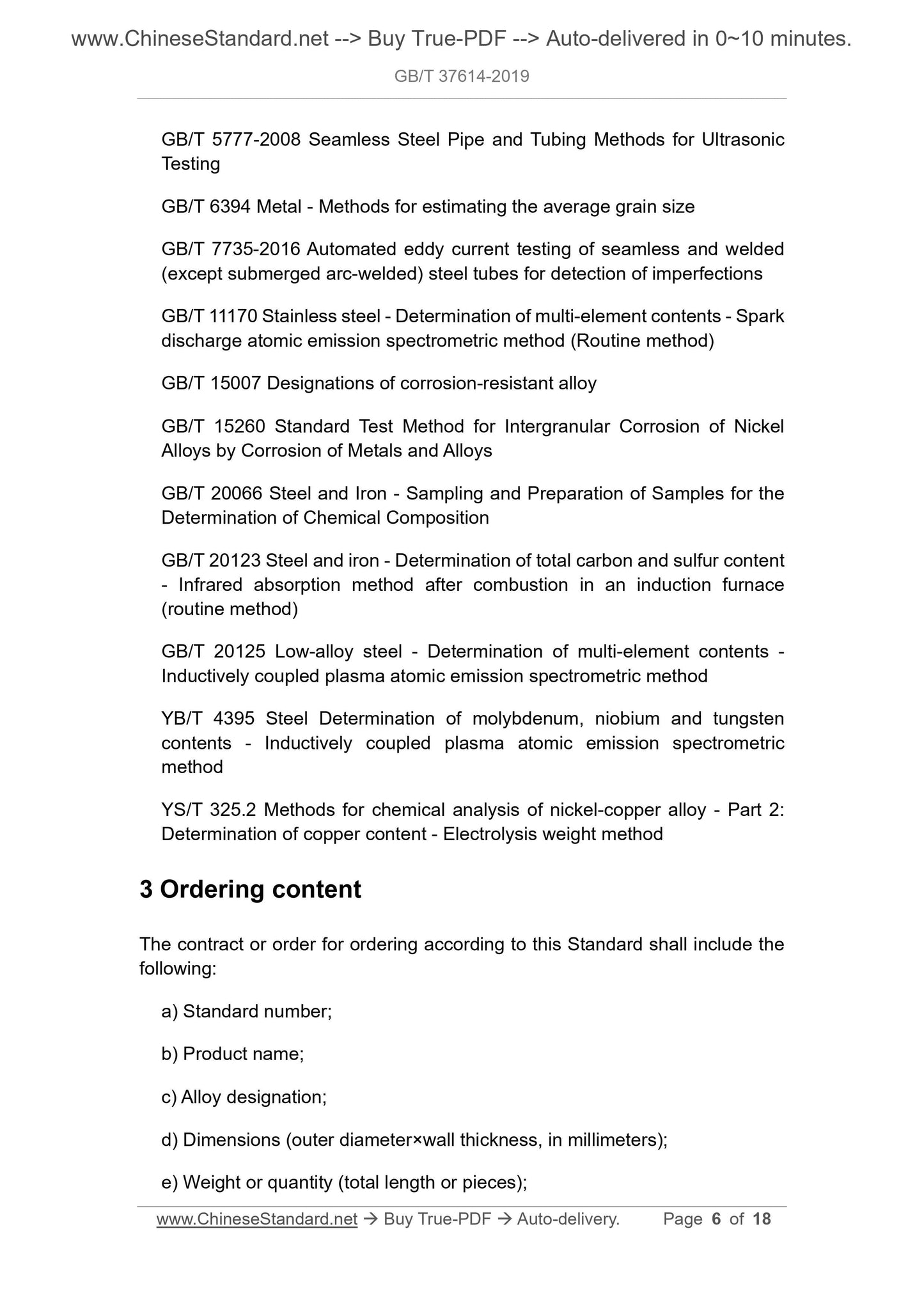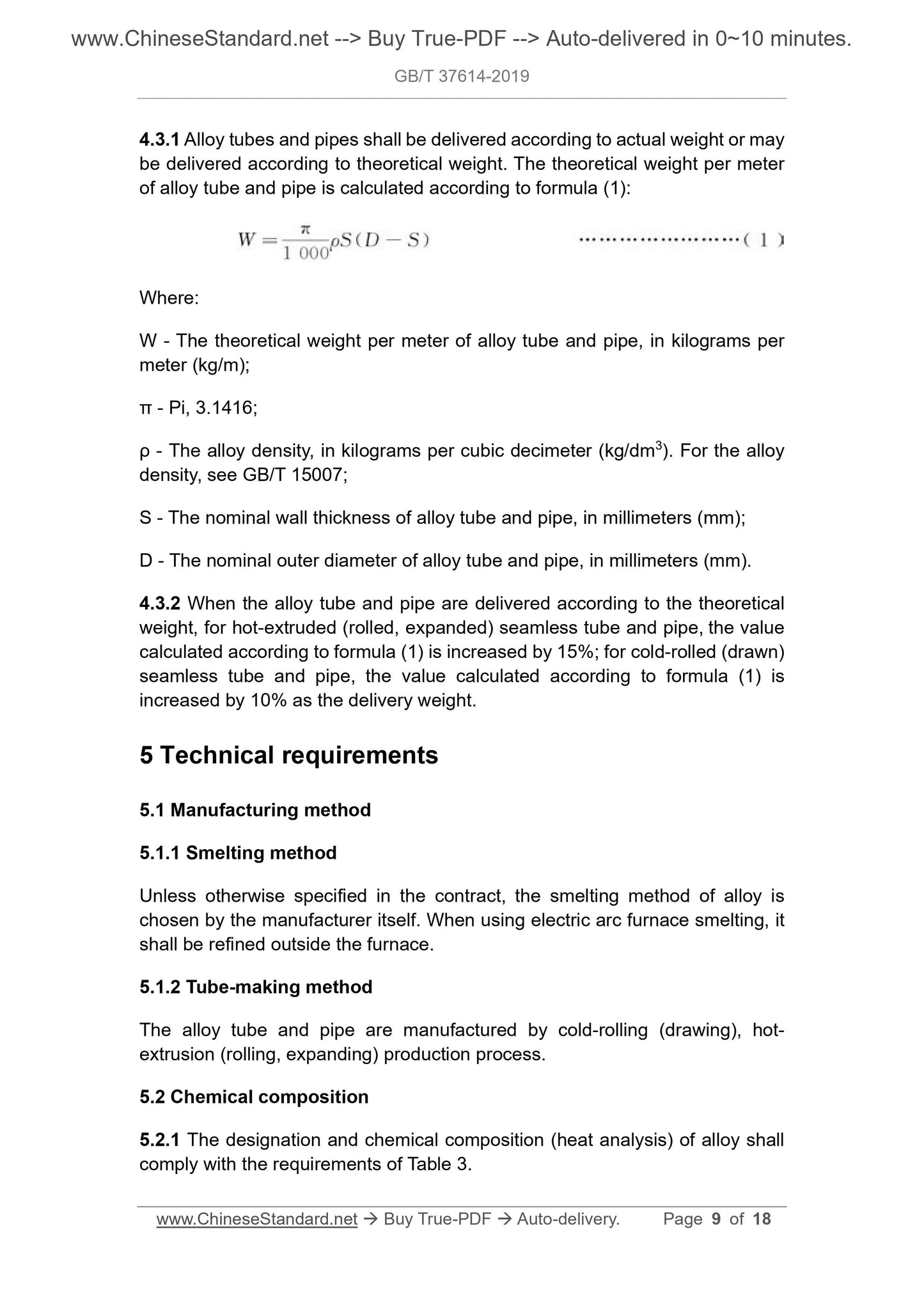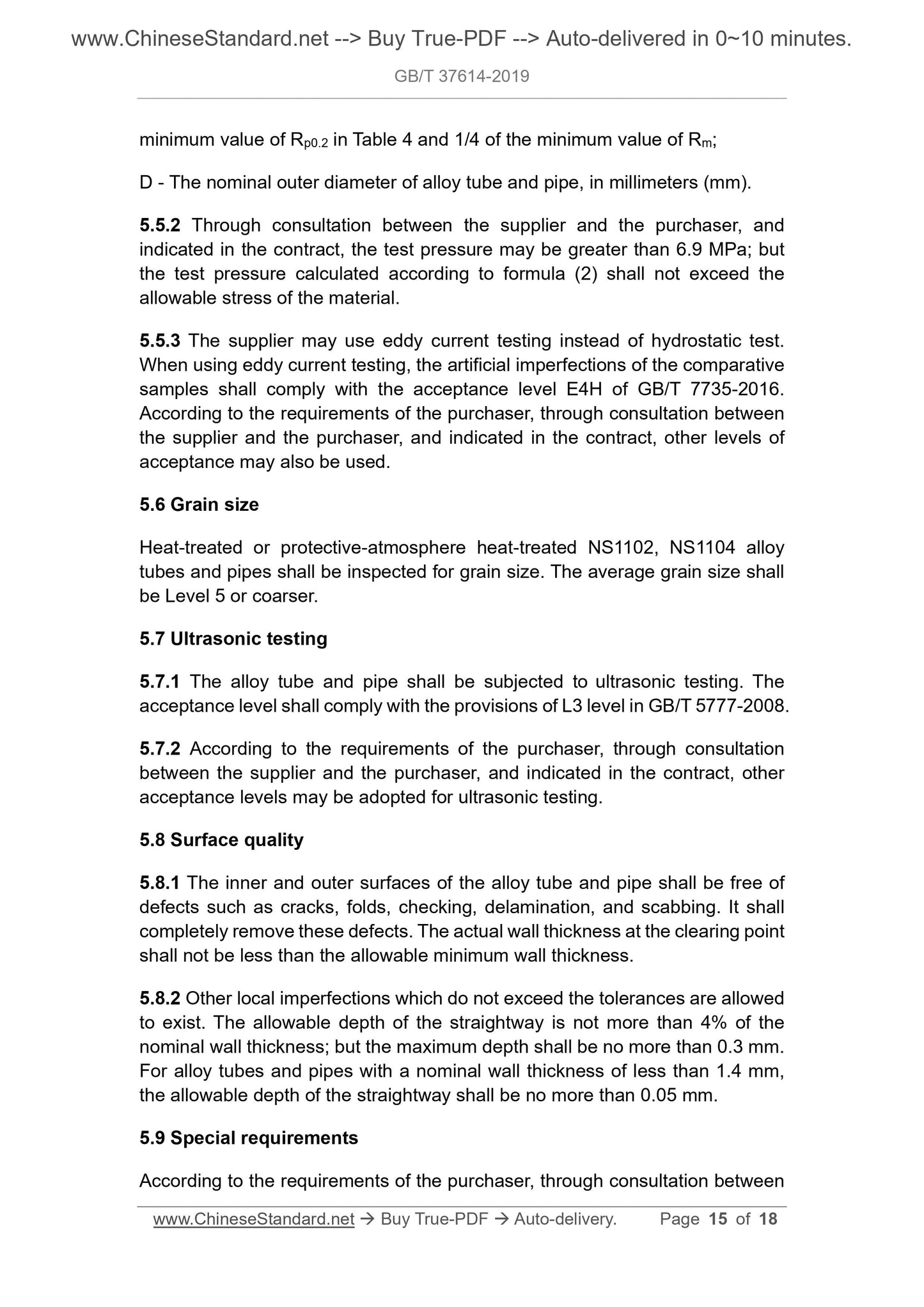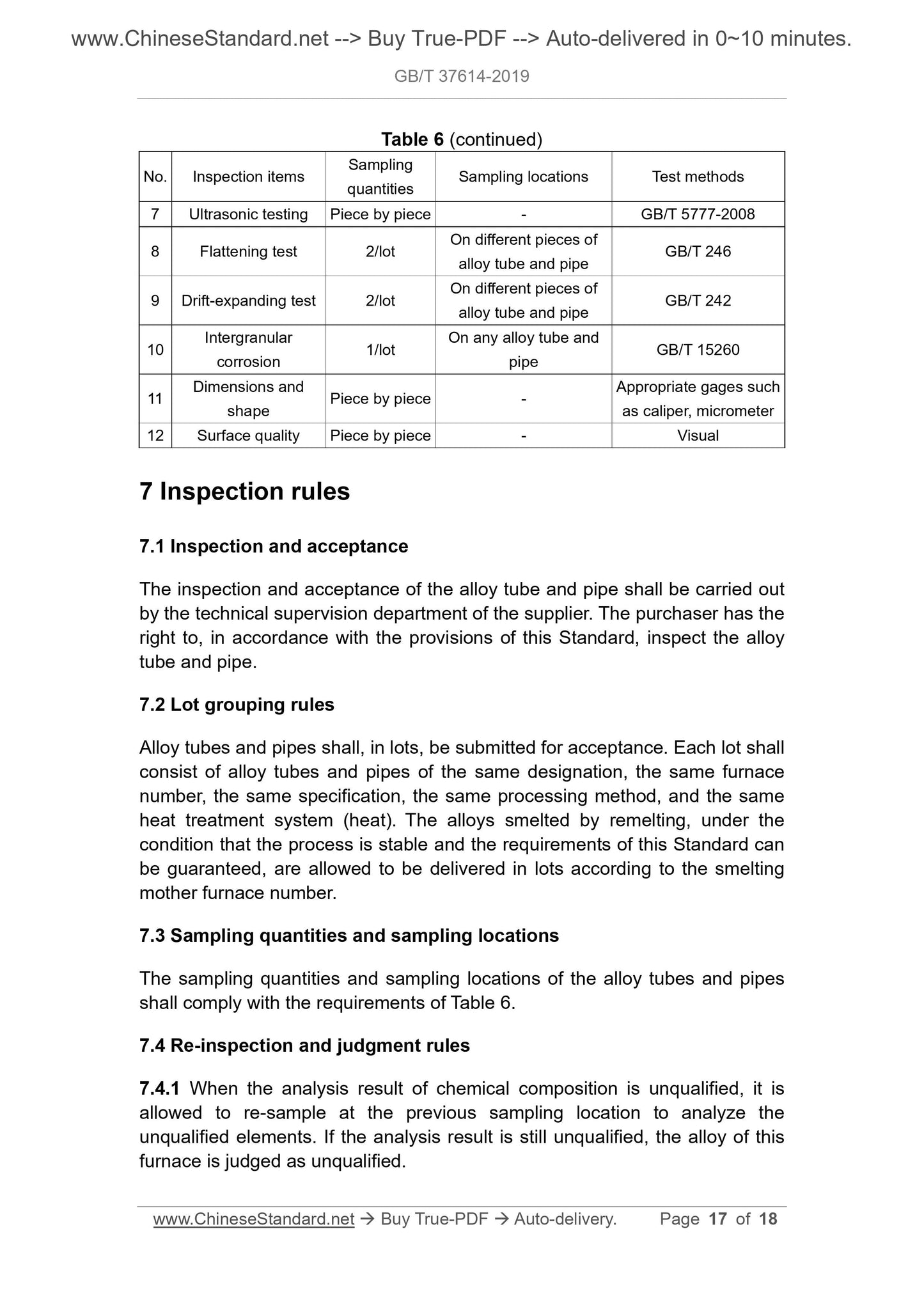1
/
of
7
www.ChineseStandard.us -- Field Test Asia Pte. Ltd.
GB/T 37614-2019 English PDF (GB/T37614-2019)
GB/T 37614-2019 English PDF (GB/T37614-2019)
Regular price
$150.00
Regular price
Sale price
$150.00
Unit price
/
per
Shipping calculated at checkout.
Couldn't load pickup availability
GB/T 37614-2019: Corrosion-resistant alloy seamless tube and pipe
Delivery: 9 seconds. Download (and Email) true-PDF + Invoice.Get Quotation: Click GB/T 37614-2019 (Self-service in 1-minute)
Newer / historical versions: GB/T 37614-2019
Preview True-PDF
Scope
This Standard specifies the ordering content, dimensions, shape, weight,technical requirements, test methods, inspection rules, packing, marking, and
quality certification of corrosion-resistant alloy seamless tube and pipe.
This Standard applies to nickel-based, iron-nickel-based, pure-nickel, and
nickel-copper corrosion-resistant alloy cold-rolled (drawn) seamless tube and
pipe or hot-extruded (rolled, expanded) seamless tube and pipe (hereinafter
referred to as alloy tube and pipe).
Basic Data
| Standard ID | GB/T 37614-2019 (GB/T37614-2019) |
| Description (Translated English) | Corrosion-resistant alloy seamless tube and pipe |
| Sector / Industry | National Standard (Recommended) |
| Classification of Chinese Standard | H59 |
| Classification of International Standard | 77.140.99; 77.140.75 |
| Word Count Estimation | 14,170 |
| Date of Issue | 2019-06-04 |
| Date of Implementation | 2020-05-01 |
| Issuing agency(ies) | State Administration for Market Regulation, China National Standardization Administration |
Share
